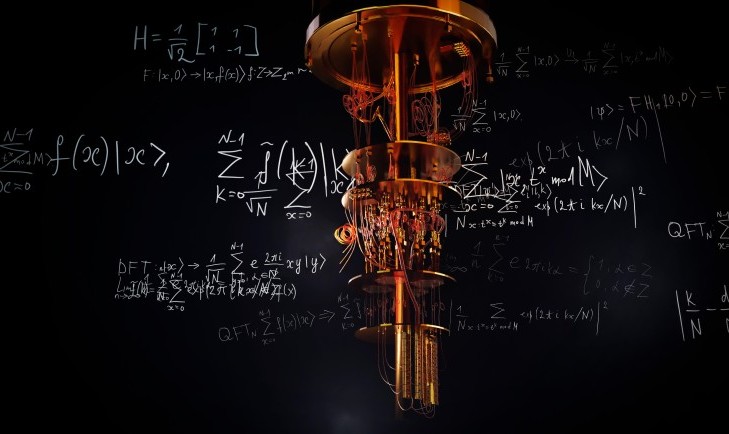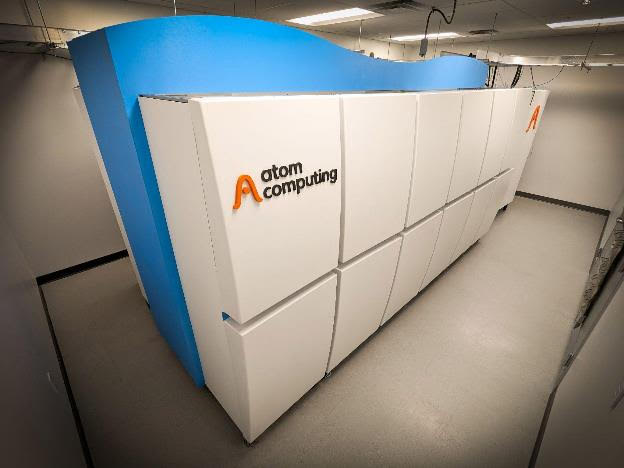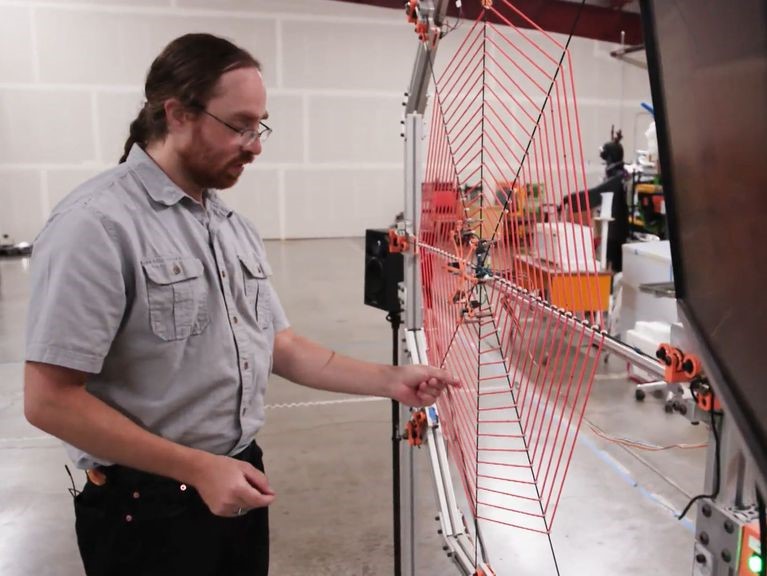11/02/23
Best of the West: Quantum computing; Marine carbon capture; Electric vehicle charging gigahubs; A new instrument based on spider webs; and the most expensive Halloween ever.

The Western Governors' Association keeps you updated on the latest news in the West. Here are the top stories for the week starting Oct. 30, 2023. (Photos courtesy of Adobe, Atom Computing, and Brandon Swanson / OPB).
The promise of quantum computing has been discussed for years. Recent advancements, however, have brought the potential of this technology into reach.
Colorado-based Atom Computing announced this week that it developed the first quantum computer to pass the 1,000-qubit (the basic unit of quantum information) milestone.
 Unlike the binary system used by traditional computers (ones and zeros), qubits use the principles of quantum mechanics to allow them to be in a coherent superposition of two states simultaneously (meaning they can be a one, zero, or both all at the same time). By taking advantage of this principle, a quantum computer with 300 qubits could perform more calculations in an instant than there are atoms in the visible universe. It’s commonly said that addressing global issues, like climate change, would take our classical computers of today billions of years to solve, whereas a quantum computer could find solutions in mere weeks, days, or hours.
Unlike the binary system used by traditional computers (ones and zeros), qubits use the principles of quantum mechanics to allow them to be in a coherent superposition of two states simultaneously (meaning they can be a one, zero, or both all at the same time). By taking advantage of this principle, a quantum computer with 300 qubits could perform more calculations in an instant than there are atoms in the visible universe. It’s commonly said that addressing global issues, like climate change, would take our classical computers of today billions of years to solve, whereas a quantum computer could find solutions in mere weeks, days, or hours.
Following their recent breakthrough, Atom Computing said a prototype of the computer is due to become available for use in 2024.
But while developing the hardware capable of quantum computing is a massive step forward, many are still trying to figure out exactly how these computers can work. To this end, Researchers from Microsoft, the University of Texas, and the University of California Berkley recently solved two, 20-year old problems in quantum computing known as Grover’s algorithm and Shor’s algorithm, which calculate the largest possible quantum speedups for graph problems that involve analyzing massive sets of unstructured data and finding underlying connections and patterns in it.
As advancements in quantum computing are realized, so too are real-world applications.
The U.S. Department of Energy’s Office of Science selected six projects that will receive $11.4 million in funding to conduct research on quantum information science for fusion energy sciences, two of which are in New Mexico. The funding will focus on advancing quantum algorithms related to fusion and plasma physics, developing high-sensitivity measurement techniques for plasmas, and exploring high-energy density physics methods for QIS materials discovery and synthesis.
Colorado-based Unisys is looking to optimize the supply chain by using quantum computing to solve logistics questions. By integrating artificial intelligence, advanced analytics, and quantum computing, Unisys Logistics Optimization enables almost instantaneous decisions about everything from building a pallet to loading it successfully onto a plane while considering important details such as temperature and weight distribution, leading to significant reductions in time and expenses throughout the supply chain.
As part of Welcome Leap's Quantum for Bio Challenge, IBM Quantum in Colorado teamed up with a team of 12 scientists from around the world, including Stanford University in California, to create quantum algorithms and workflows for more precise and rapid protein structure predictions and to investigate the potential of quantum computing for developing photon-activated cancer drugs.
A new report from Colorado-based Finra suggested that recent technology breakthroughs and an infusion of industry capital in quantum computing have allowed the brokerage industry to begin thinking about how it could harness the technology to optimize portfolio management, pricing, and crypto safekeeping.
Quantum algorithms can even simulate environmental scenarios, giving experts crucial insights. Multiverse Computing, a Spanish start-up was recently awarded £100,056 from Innovate UK to improve flood risk assessment using quantum technology.
As these applications become more realistic several western communities are looking for new ways to support the industry.
Reps. Frank Lucas, R-Okla. and Zoe Lofgren, D-Calif. — the chair and ranking member of the House Committee on Science, Space, and Technology, introduced a bill to reauthorize the National Quantum Initiative Act.
Arizona State University introduced a dedicated quantum computing pathway within its electrical engineering major. The pathway officially started this semester with one class, which is meant to establish the basic language of quantum mechanics before the students move into more specific quantum computing areas, like quantum optics.
The Texas Institute for Electronics at the University of Texas signed a memorandum of understanding with Infleqtion, a global quantum research company, to establish a new center of excellence for quantum manufacturing. The center, called qNexus, enables the Institute and Infleqtion to produce quantum devices for fields like defense and healthcare.
Marine Carbon Capture: The U.S. Department of Energy announced $36 million for 11 projects across 8 states, including Washington, Colorado, Texas, and Utah, to accelerate the development of marine carbon dioxide removal capture and storage technologies (mCDR). According to DOE, “mCDR techniques take advantage of the ocean’s natural carbon capture and storage processes and, together with other carbon dioxide removal methods, have the potential to mitigate and remove hundreds of millions of tons of harmful carbon dioxide emissions per year.”
Electric Vehicles: BP announced that it will spend $100 million buying Tesla ultrafast chargers to build out its “BP pulse” network in the United States. It will begin installing the self-branded chargers next year at its BP and Amoco gas stations, AMPM and Thorntons convenience stores, and TravelCenters of America truck stops, as well as at large “Gigahub” charging sites in major cities.
Learn more about strategies for expanding the regional electric vehicle charging network, by listening to an episode of WGA’s Out West Podcast with former Oregon Governor Kate Brown.
 SpiderHarp: Ross Hatton, a robotics professor at Oregon State University built a SpiderHarp to study how spiders use vibrations in their webs to interpret the world around them. The device recreates the kinds of vibrations spiders would feel in their web and converts them into musical notes. The resulting instrument looks just like a spider web but sounds like a harp.
SpiderHarp: Ross Hatton, a robotics professor at Oregon State University built a SpiderHarp to study how spiders use vibrations in their webs to interpret the world around them. The device recreates the kinds of vibrations spiders would feel in their web and converts them into musical notes. The resulting instrument looks just like a spider web but sounds like a harp.
“Spiders that weave webs often have very poor eyesight, and so they understand the world through the vibrations in their webs,” Hatton said. “And it’s a complicated problem. There are many strings vibrating. But I had some engineering tools that I could use as an entry point to start cracking this nut of how the whole web vibration communicates information to the spider.”
The Most Expensive Halloween Ever: This Halloween, American shoppers are expected to spend $700 million on pet costumes, according to the National Retail Federation. Altogether, Halloween spending in the U.S. will likely top $12 billion, a new record. A National Retail Federation survey estimated that an average shopper would spend $108 on candy, costumes, and decorations.